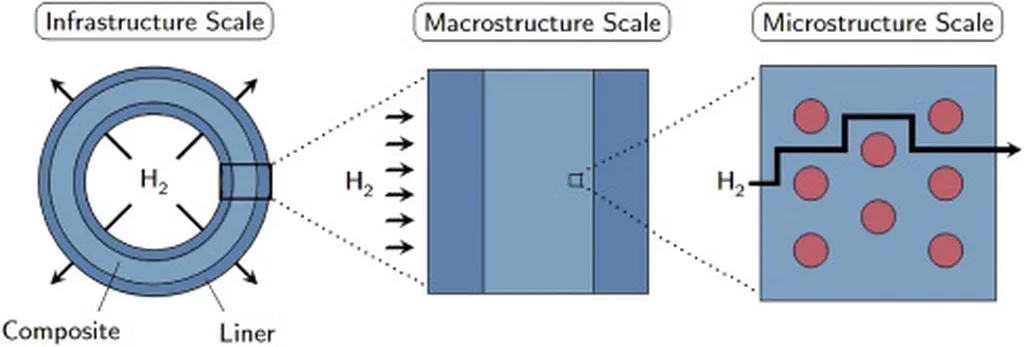In the quest to harness hydrogen as a clean energy source, one of the critical challenges is understanding and mitigating hydrogen permeation in materials used for storage and transportation. A recent study published in the open-access journal ‘Composites Part C: Open Access’ (which translates to ‘Composites Part C: Open Access’ in English) offers a novel approach to tackle this issue, with significant implications for the energy sector.
Dr. Andrew Angus, a researcher at the International Institute for Nanocomposites Manufacturing (IINM) at the University of Warwick, has developed a Bayesian modelling approach to quantify uncertainties in hydrogen permeation through fibre-reinforced polymer composites. This method combines several advanced techniques, including Gaussian Process (GP) regression, Bayesian optimisation, and Markov Chain Monte Carlo (MCMC) simulations.
“The beauty of this approach lies in its ability to integrate data from both physics-based models and experimental observations,” explains Dr. Angus. “This allows us to predict not just the permeability of these composites, but also the uncertainties associated with those predictions.”
The research demonstrates the approach’s capability in several key areas. At the microscale, it enables statistical inference of fibre permeability, which is crucial for understanding the fundamental mechanisms of hydrogen permeation. For multilayered systems, the model quantifies the effective permeability and its associated uncertainties, providing valuable insights for material design and selection. Additionally, the approach supports simple probabilistic design at the component level, which can guide the development of more robust and reliable hydrogen storage and transportation systems.
The commercial impacts of this research are substantial. As the energy sector increasingly turns to hydrogen as a clean and sustainable fuel, the need for materials that can safely and efficiently contain and transport hydrogen becomes paramount. By providing a robust method for uncertainty quantification, Dr. Angus’s work can help accelerate the development and deployment of these materials, ultimately supporting the growth of the hydrogen economy.
Moreover, the Bayesian modelling approach offers a versatile tool that can be applied to a wide range of materials and conditions. “This method is not just limited to hydrogen permeation in composites,” notes Dr. Angus. “It can be adapted to study other types of permeation and diffusion processes, as well as other materials systems.”
As the energy sector continues to evolve, research like Dr. Angus’s will play a pivotal role in shaping its future. By providing a deeper understanding of material behavior and more accurate predictions of performance, this work can help pave the way for a cleaner, more sustainable energy landscape. The study, titled “Bayesian modelling approach to hydrogen permeation in fibre-reinforced polymer composites,” is a testament to the power of advanced modelling techniques in driving innovation and progress in the field of materials science and engineering.

